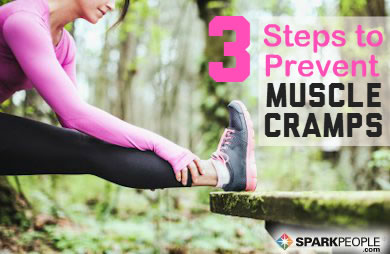|
Linda Quirk ran her first marathon in 1988 at age 35. Two decades later, the Florida resident has recently returned from Antarctica, after having run seven marathons across seven continents. Linda’s journey was part of an effort to raise $1 million for Caron Treatment Centers, an organization that helped save her stepdaughter's life. Linda has raised $250,000 to date. To keep her million-dollar promise, Linda has announced a new mission – to be the first woman to complete the “4 Deserts” in under a year – a series of four, weeklong, 155-mile, ultramarathons across some of the most daunting deserts on Earth. Linda completed her seventh marathon on March 10 and is training for her 2010 “4 Deserts” mission. She'll run across the Atacama (Chile), Gobi (China), Sahara (Egypt) and Last (Antarctica) deserts. Linda recently talked with the dailySpark about running, setting goals and the importance of motivation. daily Spark: When did you start running? Linda Quirk: I actually ran my first marathon untrained--never having run a 5k or 10k. I just went straight to the marathon in 1988 in Los Angeles. I was 35 at the time. Prior to that, I just ran around the track after I had my first son to lose some weight. My brother called me up and said, "Do you want to run a marathon?" He had never run one either. Both of us just started running around the area. I trained about 6-8 months. It wasn't a schedule. I just knew I had to get out and run. I was just elated after. I was pretty sore, and it took me awhile to recover from it, but it was such a great feeling. You meet wonderful people. I think that's what got me hooked was just the enthusiasm surrounding me. dS: What is the difference between running a marathon at 35 and running seven at 55? Linda: I've progressed over the years. My body is a little more in tuned to doing this so I recover a whole lot more quickly, but again with age, there are other things that crop up. I spend more time working on being able to continue to do this. I spend a lot of time in the gym as well as running and doing a lot of cross training. dS: How many marathons have you run total? Linda: Including Ironman competitions, I've run somewhere around 20 marathons. dS: I know you're running for a cause that's very close to your heart. Can you tell us a little bit about your motivation? Linda: My motivation is to give back. We were fortunate enough to be able to put our daughter through this (Caron) treatment center, which absolutely saved her life. This is just our family's way of giving back and giving those that can't afford it a second chance at life. And 100% of everything that I raise goes to the scholarships. Right now, we've been able to help put through 20 people through treatment. dS: You started with THE marathon--the Boston Marathon--and then ended in Antarctica. Was that your first Boston Marathon? Linda: It was. It took me a long time to qualify for that. The pressure was on, when I decided I wanted to do the seven continents--and I absolutely wanted Boston. But it had eluded me for two years. I had missed the cut-off time by a minute and a half. That minute and a half is very difficult to get sometimes. I luckily qualified for that. dS: Can you tell us a little bit about your travels and your adventures? Linda: After Boston, I left about three weeks later. In May, I ran the Great Wall of China, which was very interesting because this was an Olympic year. We stayed in Beijing, so we were able to see the Bird's Nest Stadium and all of that. The actual race site was about three hours outside of Beijing. We had a three-hour bus trip before the marathon. That was a very interesting and exciting course. I loved that course--it was very difficult as well. After China, another three or four weeks later, I left for Easter Island, which is in South America. It is very remote. It's a five-hour flight from Chile. It takes awhile to get there. It's very quiet, very serene. There are more horses and dogs than there are people. After Easter Island, I went to Kenya and I ran in the Safaricom Marathon in the Lewa Wildlife Conservatory. You run right there in the game reserve with the animals, and so you have spotter places and helicopters and about 30 armed guards on the course--just in case a predator comes by. The animals are right there! It was exhilarating. Then I went to Iceland--that was beautiful. Iceland is just gorgeous. It's very green. There were beautiful waterfalls and geysers, and it was just spectacular. Then I ran Melbourne (Australia). Just about every single type of terrain you can conceive of I ran on. dS: Then you moved on to Antarctica. What was it like? How cold was it? Linda: The actual race is on King George Island, which is on the peninsula, and it was unseasonably warm. It was about 35-38 degrees (Fahrenheit), so we were actually taking off layers. The weather changes very quickly. Within an hour, the winds start coming up, and by the time we finished, it was starting to snow. The conditions there are very hilly and muddy and wet and the glacier was melting. You're jumping over streams, with rocks everywhere and navigating through water and getting stuck in mud. It sucks your shoes off. It wasn't at all what I had anticipated. I was expecting fluffy snow! As we visited other areas in Antarctica, it was like that--with water and glaciers and otters. dS: Do you have time to explore the countries where you run? Linda: In every country that I went to, I took a week to a week and a half to actually get outside and go through different areas, to experience the people and the place. dS: You live in Florida, so how do you train to run in such diverse and sometimes harsh climates? Linda: I'm lucky that we also have a home in California, so I'll go there to get some training on hills. Most of the time if I am here (in Florida), I'm doing various types of training on treadmills or Stairmasters for hills. I just have to get a little more creative in the way that I train. For my next (marathons--across deserts), I'll actually be using a Stairmaster with a weighted backpack because (during those marathons), I'll have weight on my back. I didn't have to do that for this one. I use a Velotron here at home with a Computrainer. I can't always get outside because we have a lot of thunderstorms here, so I will train on that. While I had (a foot injury), I did a lot of running on the bike. dS: What is your diet like? I hear you stick to a mostly plant-based diet. Linda: My nutritionist had me move that way mainly because I couldn't run the risk of any parasites in any of these countries. I trained to eat that way, and it looks like I'm going to continue that way. I don't eat a whole lot of meat anyway, but we really experimented with a lot of different things, so I'm becoming more and more (vegetarian). dS: What is your training schedule like? Linda: I take a day off per week. But they're not all heavy days. On average, it's about two to three hours a day. dS: What's up next? Linda: I'm using 2009 as training, and I've actually been fortunate enough to still be sponsored by BP. So I'll still be running for them. I'll have a couple of marathons, half marathons and an ultramarathon in 2009. That's to prepare me for 2010, when I'm going to try to become the first woman to complete the four deserts in a year. Each race is 155 miles total, split up over seven days. You pretty much run almost a marathon a day. They typically throw in an ultra; one of the days will have a 40 or 50 mile increment. But the caveat to all of this is that you have to be self-supporting and carry all of your food and clothing and everything on your back. They supply you with a tent to sleep in and haul your water. … They're pretty grueling. You can't take more than 28 pounds on your back. They monitor your calorie intake as well. You have to at least have 2,000 calories per day on you. That's why, nutritionally, I'm going to really be working to try everything out I'll be taking. It has to be freeze-dried and nonperishable in these desert conditions. dS: And what will happen with the money you raise? Will it also go to help fund addiction scholarships? Linda: My goal was to raise $1 million, and with the economic crisis and things that happened this year, I was able to raise $250,000. So I'm trying to stay true to my word until I reach it. dS: What motivates you? Linda: What motivates me is that I love the feeling of being fit. I don't like being sedentary. I'm very goal-oriented, I guess. I always set a challenge for myself. They're not always this grand. In order to keep going, I've got to have a reason. Even if it's a small goal, I'll set it and keep going. For me, it's really about the challenge. Especially as I age, it becomes more important for me. I like my body--and I like when it feels good. Linda has teamed up with BP to help launch its BP gasoline with Invigorate – a unique formula that helps clean and protect vital engine parts to help cars run younger for longer. Linda hopes to inspire others to live younger for longer through her desert mission! Follow Linda's progress at run7on7.com. Did you find Linda's story inspiring? What fitness goals have you set for yourself? |
Related Entries
More From SparkPeople
|






















